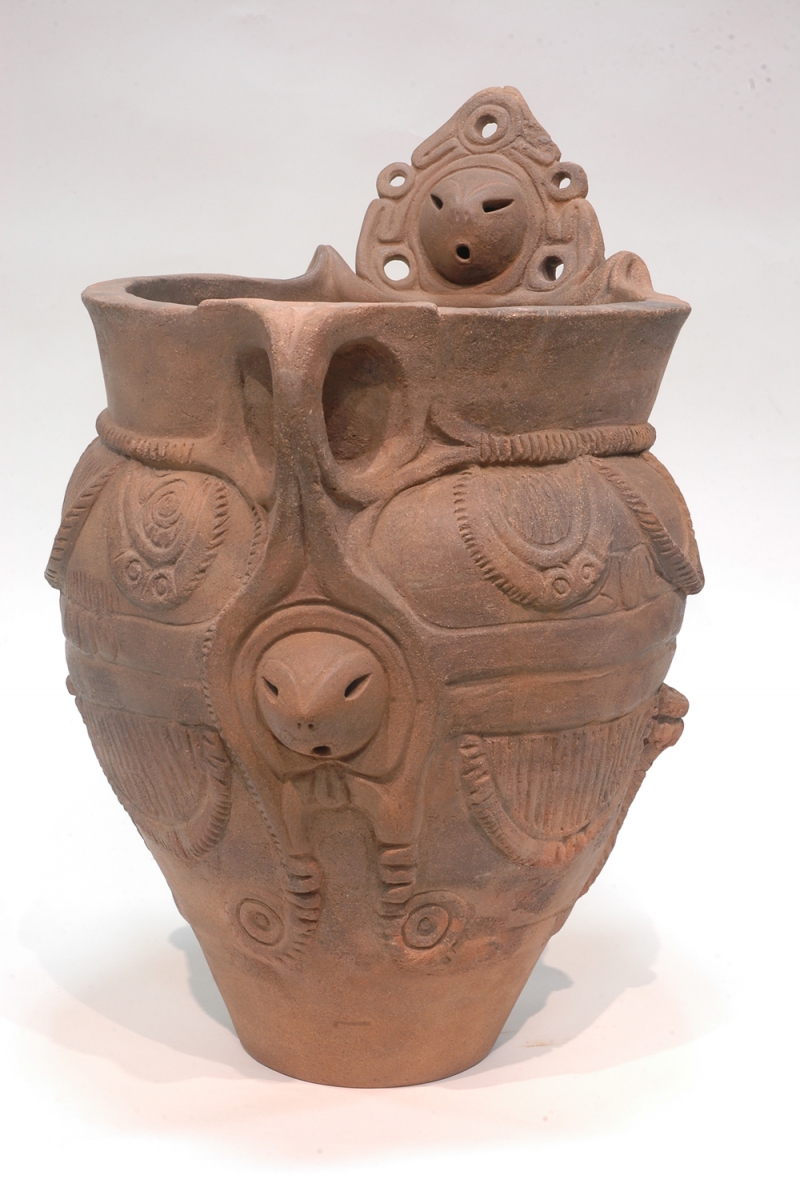Visualizing Birth through the Jomon Childbirth Pot

Jomon pottery vessel, Tsugane-goshomae site,
Yamanashi Prefecture, Japan, ca. 3500-2500 BCE
Tim Stearns, a San Francisco independent scholar, recently reached out to Visualizing Birth, communicating fascinating information about ancient Jomon pottery vessels that depict childbirth imagery. Recovered from the Tsugane-goshomae site in Japan’s Yamanashi Prefecture, the above image of a Jomon pot shows a maternal figure birthing a child. One sees the head of the infant crowning, located at the front of the pot, emerging from the mother’s womb.
According to this cultural website on the Jomon vessels, the maternal face rests at the rim of the pot, with the pot itself representative of the birthing woman’s body. Mr. Stearns, who has lived extensively in Japan, has stated in our correspondence that, “the pottery figure may be a shaman’s prayer figure to help a woman’s sitting or suspended position as she gives birth.”
For pregnant or laboring women, the image of the Jomon pot can aid in the visualization of birth. The curved and rounded sides of the pot are calming to look at, and the sight of the crowning infant reminds women and other pregnant people that the body is capable of crowning and birth.
Similar to the Sheela-na-gig figures of Ireland and other locations in Northwest Europe (example 1, example 2, example 3), the Jomon pottery vessels have the capacity to empower women in their abilities at visualizing birth as they approach either labor or actual birth.

Independent Scholar Tim Stearns and his daughter Lace
San Francisco